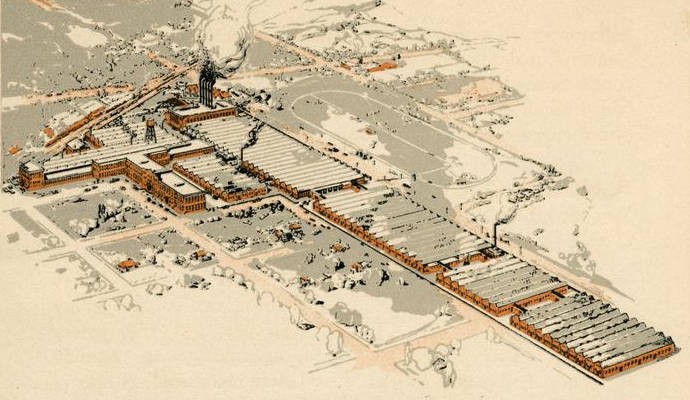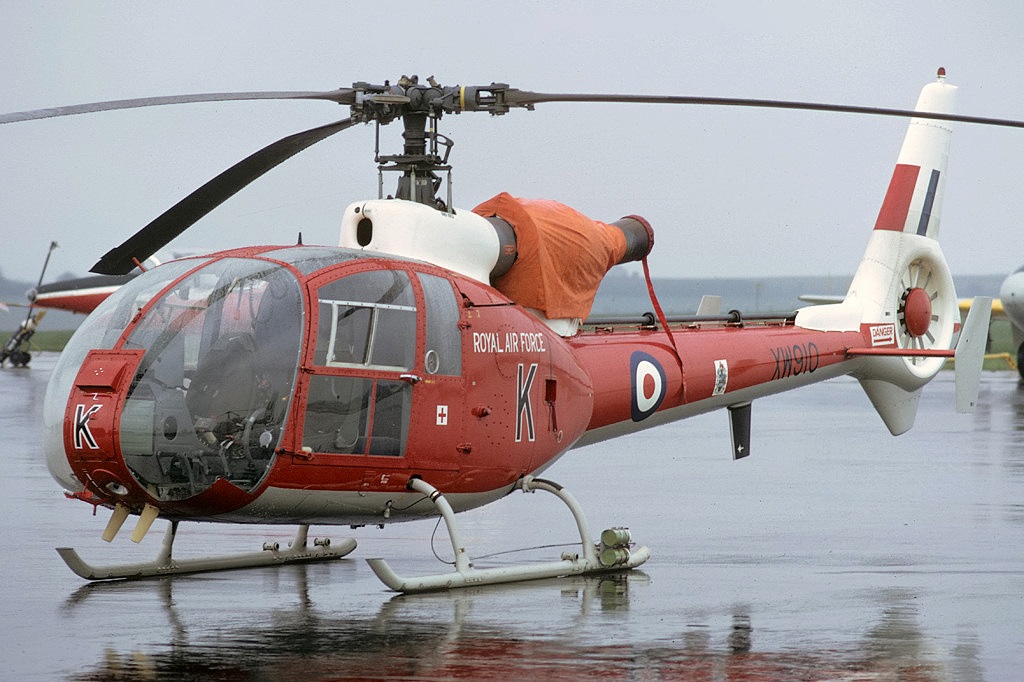|
Eurocopter AS350 Écureuil
The Airbus Helicopters H125, previously the Eurocopter AS350 Écureuil, or Squirrel, is a single-engine light utility helicopter designed and originally manufactured by the French corporation Aérospatiale, and later by Eurocopter, now Airbus Helicopters. In North America, the H125 is marketed as the AStar. The AS355 Ecureuil 2 is a twin-engine variant, marketed in North America as the TwinStar. The Eurocopter EC130 is a derivative of the AS350 airframe and is considered by the manufacturer to be part of the Écureuil single-engine family. Development In the early 1970s, Aérospatiale initiated a development program to produce a replacement for the aging Aérospatiale Alouette II. While the Aérospatiale Gazelle, which had been developed in the 1960s and 1970s, had been met with numerous orders by military customers, commercial sales of the type had been less than anticipated, thus the need for a civil-oriented development was identified. The development of the new rot ... [...More Info...] [...Related Items...] OR: [Wikipedia] [Google] [Baidu] [Amazon] |
WikiProject Aircraft
A WikiProject, or Wikiproject, is an affinity group for contributors with shared goals within the Wikimedia movement. WikiProjects are prevalent within the largest wiki, Wikipedia, and exist to varying degrees within Wikimedia project, sibling projects such as Wiktionary, Wikiquote, Wikidata, and Wikisource. They also exist in different languages, and translation of articles is a form of their collaboration. During the COVID-19 pandemic, CBS News noted the role of Wikipedia's WikiProject Medicine in maintaining the accuracy of articles related to the disease. Another WikiProject that has drawn attention is WikiProject Women Scientists, which was profiled by ''Smithsonian Magazine, Smithsonian'' for its efforts to improve coverage of women scientists which the profile noted had "helped increase the number of female scientists on Wikipedia from around 1,600 to over 5,000". On Wikipedia Some Wikipedia WikiProjects are substantial enough to engage in cooperative activities with outsi ... [...More Info...] [...Related Items...] OR: [Wikipedia] [Google] [Baidu] [Amazon] |
Changhe Z-11
The Changhe Z-11 is a light utility helicopter developed by Changhe Aircraft Industries Corporation (CAIC). According to the Changhe Aircraft Industries Corporation website, it is claimed to be the first indigenously-designed helicopter in China. However, it is largely based on the Eurocopter AS350 Écureuil. Development The Z-11 project started in 1989 and the first flight was made in Dec 1994. In Oct 2000, test flights of Z-11 were completed. The chief designer of Z-11 is Mr. Wu Ximing (吴希明), who is also the chief designer of three other Chinese helicopters, including the Z-10. Under Mr. Wu, the Z-11 became the first Chinese helicopter to be completely designed using CAD/CAM techniques. The Z-11WB, the attack and reconnaissance variant, features pintle mount weapons and two weapon pylons on each side of the aircraft. The engine is replaced by Turbomeca Arriel 2B1A turboshaft engine developing 632 kW (848 shp) of power. Variants ;Z-11: original unarmed versio ... [...More Info...] [...Related Items...] OR: [Wikipedia] [Google] [Baidu] [Amazon] |
Marignane
Marignane (; ) is a commune in the Bouches-du-Rhône department in the Provence-Alpes-Côte d'Azur region in southern France. Geography It is a component of the Aix-Marseille-Provence Metropolis, and the largest suburb of the city of Marseille. It is located 18.3 km (11.4 mi) to the northwest of Marseille. Climate The climate is hot-summer mediterranean (Köppen: ''Csa''). The city serves as the basis for data from Marseille through the weather station at the airport, which is inside Marignane's city limits. History In the 15th century the Count of Provence owned the land, and from 1603 to the French Revolution it belonged to the Covets. In the 17th century the Covets refurbished the castle. Three chapels and one convent were built in the 17th and 18th century: ''Notre-Dame de Pitié'' (1635), ''Saint-Nicolas'' (1695), ''Sainte-Anne'' (1710, now demolished), and ''Couvent des Minimes'' (1695). Population Politics From 1995 to 2008, the mayor has been Da ... [...More Info...] [...Related Items...] OR: [Wikipedia] [Google] [Baidu] [Amazon] |
Turboshaft
A turboshaft engine is a form of gas turbine that is optimized to produce shaft horsepower rather than jet thrust. In concept, turboshaft engines are very similar to turbojets, with additional turbine expansion to extract heat energy from the exhaust and convert it into output shaft power. They are even more similar to turboprops, with only minor differences, and a single engine is often sold in both forms. Turboshaft engines are commonly used in applications that require a sustained high power output, high reliability, small size, and light weight. These include helicopters, auxiliary power units, boats and ships, tanks, hovercraft, and stationary equipment. Overview A turboshaft engine may be made up of two major parts assemblies: the 'gas generator' and the 'power section'. The gas generator consists of the Gas compressor, compressor, combustion chambers with ignitors and fuel nozzles, and one or more stages of turbine. The power section consists of additional stages of turbi ... [...More Info...] [...Related Items...] OR: [Wikipedia] [Google] [Baidu] [Amazon] |
Lycoming LTS101
The Lycoming (now Honeywell) LTS101 is a turboshaft engine family ranging from 650 to 850 shaft horsepower, used in a number of popular helicopters, and, as the LTP101 turboprop, light aircraft. Both models carry the US military designation T702. The engine was originally designed at the Lycoming Turbine Engine Division in Stratford, Connecticut, but is now produced by Honeywell Aerospace. Variants ;LTP101-600 ;LTP101-700 ;LTS101-600A-2 ;LTS101-600A-3 ;LTS101-600A-3A ;LTS101-650B-1 ;LTS101-650B-1A ;LTS101-650C-2 ;LTS101-650C-3 ;LTS101-650C-3A ;LTS101-700D-2 ;LTS101-750A-1 ;LTS101-750B-2 ;LTS101-750C-1 ;LTS101-850B-2 ;T702 Applications * Aérospatiale HH-65A/B Dolphin * Air Tractor AT-302 * Bell 222 * Cessna 421C Golden Eagle (turbine conversion) * EcoJet concept car built under the direction of General Motors * Eurocopter AS350 AStar * MBB/Kawasaki BK 117 * PAC Cresco * Piaggio P166 * High Survivability Test Vehicle (Light) (AAI proposal) Specifications (LTS101-650C-3 ... [...More Info...] [...Related Items...] OR: [Wikipedia] [Google] [Baidu] [Amazon] |
Automotive Industry
The automotive industry comprises a wide range of company, companies and organizations involved in the design, Business development, development, manufacturing, marketing, selling, Maintenance, repairing, and Custom car, modification of motor vehicles. It is one of the world's largest industry (economics), industries by revenue (from 16% such as in France up to 40% in countries such as Slovakia). The word ''automotive'' comes from the Greek language, Greek ''autos'' (self), and Latin ''motivus'' (of motion), referring to any form of self-powered vehicle. This term, as proposed by Elmer Ambrose Sperry, Elmer Sperry (1860–1930), first came into use to describe automobiles in 1898. History The automotive industry began in the 1860s with hundreds of manufacturers pioneering the Brass Era car, horseless carriage. Early car manufacturing involved manual assembly by a human worker. The process evolved from engineers working on a stationary car to a conveyor belt system where the ... [...More Info...] [...Related Items...] OR: [Wikipedia] [Google] [Baidu] [Amazon] |
Rolling (metalworking)
In metalworking, rolling is a metal forming process in which metal stock is passed through one or more pairs of rolls to reduce the thickness, to make the thickness uniform, and/or to impart a desired mechanical property. The concept is similar to the rolling of dough. Rolling is classified according to the temperature of the metal rolled. If the temperature of the metal is above its recrystallization temperature, then the process is known as hot rolling. If the temperature of the metal is below its recrystallization temperature, the process is known as cold rolling. In terms of usage, hot rolling processes more tonnage than any other manufacturing process, and cold rolling processes the most tonnage out of all cold working processes... Roll stands holding pairs of rolls are grouped together into rolling mills that can quickly process metal, typically steel, into products such as structural steel (I-beams, angle stock, channel stock), bar stock, and rails. Most steel mills ... [...More Info...] [...Related Items...] OR: [Wikipedia] [Google] [Baidu] [Amazon] |
René Mouille
René Mouille (30 October 1924 – 10 January 2019) was a French engineer, and designer of many of France's most well-known and important helicopters, widely flown by many air forces around the world. Education Mouille studied at the École spéciale des travaux aéronautiques (ESTAé) in Orsay, which closed in 1988; the college has been superseded by the Arts et Métiers ParisTech. Career Sud Aviation He joined SNCASE. The first helicopter that he designed was the SNCASE SE.3110, the first French helicopter, flown by Jacques Lecarme in June 1950. The SNCASE SE.3120 Alouette first flew in July 1951, flown by Jean Boulet. His next helicopter was the Sud Aviation SE 3130 known as the Aérospatiale Alouette II, working with the engineer Charles Marchetti (1916-1991), and manufactured between 1956 and 1975. The Aérospatiale Alouette III first flew in 1959, of which over 2000 were made. The SNCASE SE.3200 Frelon first flew in June 1959; The Aérospatiale SA 321 Super Frelon fir ... [...More Info...] [...Related Items...] OR: [Wikipedia] [Google] [Baidu] [Amazon] |
Aérospatiale Gazelle
The Aérospatiale Gazelle (company designations SA 340, SA 341 and SA 342) is a five-seat helicopter developed and initially produced by the French aircraft company Sud Aviation, and later by Aérospatiale. It is the first helicopter to feature a fenestron tail instead of a conventional tail rotor, as well as being the first helicopter to be adapted for single-pilot operations under instrument flight rules. The Gazelle was developed during the 1960s as a successor to the Aérospatiale Alouette II, Alouette II as well as to meet a French Army requirement for a new lightweight observation helicopter. The Gazelle is considerably larger than the preceding Alouette series, yet is still powered by a single Turbomeca Astazou Gas turbine, turbine engine. Innovations in the design of the Gazelle, aside from the fenestron, included an emphasis on minimal maintenance requirements from the onset of development and the use of a Helicopter rotor#Semirigid, semi-rigid composite materials, com ... [...More Info...] [...Related Items...] OR: [Wikipedia] [Google] [Baidu] [Amazon] |
Aérospatiale Alouette II
The Aérospatiale Alouette II (, "lark"; company designations SE 313 and SA 318) is a French light helicopter originally manufactured by Sud Aviation and later Aérospatiale. It was the first production helicopter powered by a gas turbine engine instead of the heavier conventional piston powerplant. On 12 March 1955, the prototype SE 3130 performed its maiden flight. The Alouette II was a widely used type and popular with operators, with over 1,300 rotorcraft eventually being constructed between 1956 and 1975. The type was predominantly used for military purposes in observation, photography, air-sea rescue, liaison and training, but it has also carried anti-tank missiles and homing torpedoes. As a civilian helicopter, the Alouette II has been used for casualty evacuation (with two external stretcher panniers), crop-spraying and as a flying crane, with a external underslung load. A high-altitude derivative, the SA 315B Lama, was developed and entered operational service i ... [...More Info...] [...Related Items...] OR: [Wikipedia] [Google] [Baidu] [Amazon] |
European Aviation Safety Agency
The European Union Aviation Safety Agency (EASA) is an agency of the European Commission with responsibility for civil aviation safety in the European Union. It carries out certification, regulation and standardisation and also performs investigation and monitoring. It collects and analyses safety data, drafts and advises on safety legislation and co-ordinates with similar organisations in other parts of the world. The idea of a European-level aviation safety authority goes back to 1996, but the agency was legally established only in 2002; it began its work in 2003. History Based in Cologne, Germany, the agency was created on 15 July 2002 as the "European Aviation Safety Agency", and reached full functionality in 2008, taking over functions of the Joint Aviation Authorities. It was renamed the "European Union Aviation Safety Agency" in 2018. European Free Trade Association countries participate in the agency. The United Kingdom was a member until the end of the Brexit trans ... [...More Info...] [...Related Items...] OR: [Wikipedia] [Google] [Baidu] [Amazon] |



